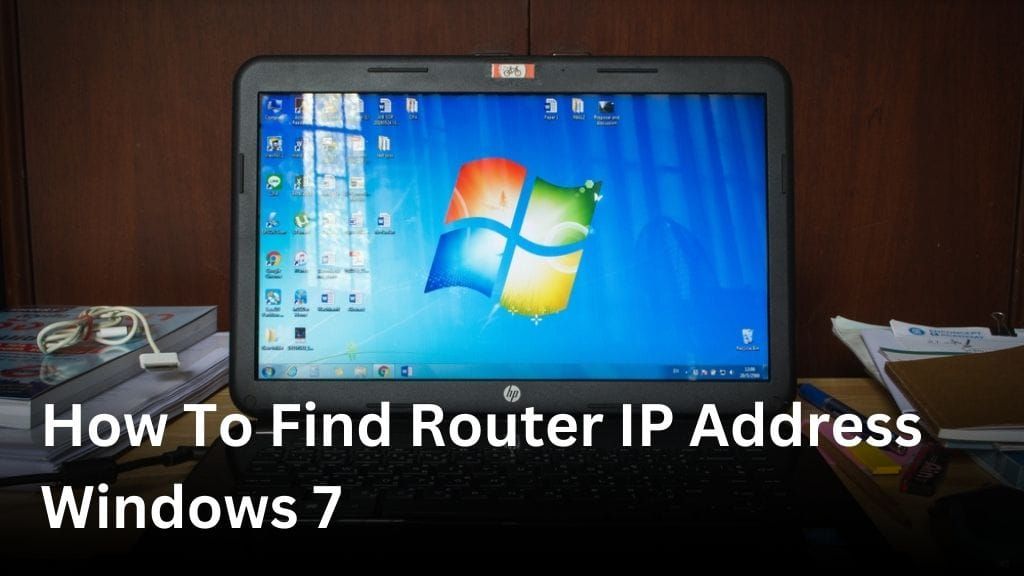Welcome to our comprehensive guide on how to find the IP address of your router on a Windows 7 operating system. Knowing your router’s IP address is crucial for managing your network settings and making any necessary configurations. In this article, we will provide you with step-by-step instructions to help you locate your router’s IP address effortlessly. Whether you’re a beginner or an experienced user, finding your router’s IP address is an essential skill that can empower you to take control of your network. By knowing this information, you can troubleshoot connectivity issues, change security settings, and optimize your network’s performance. Throughout this guide, we will explore different methods that you can use to locate the IP address of your router on Windows 7. We will cover both the graphical user interface (GUI) method and the command prompt method, so you can choose the approach that suits your preferences. Additionally, we will provide troubleshooting tips to address any difficulties you may encounter along the way. Are you ready to unlock the power of your network? Let’s dive in and discover how to find the IP address of your router on Windows 7. Locating the Router IP Address When it comes to managing your network settings on a Windows 7 operating system, knowing the IP address of your router is crucial. Having this information allows you to make necessary configurations and ensure smooth connectivity. In this section, we will explore two different methods to help you locate your router’s IP address in Windows 7, offering you the flexibility to choose the option that suits you best. Using the Graphical User Interface (GUI) Method If you prefer a visual interface, the GUI method can help you easily find your router’s IP address. By navigating through the network settings in Windows 7, you can access the necessary information with just a few clicks. Our step-by-step guide in the next section will walk you through the process, ensuring a hassle-free experience. Using the Command Prompt Method If you are comfortable using command line interfaces, the Command Prompt method provides a quick and efficient way to locate your router’s IP address. By entering a few simple commands, you can retrieve the information you need. In the following section, we will guide you through the commands and explain the process, empowering you to effortlessly obtain your router’s IP address. Using the Graphical User Interface (GUI) Method In this section, we will guide you through the process of finding your router’s IP address using the graphical user interface (GUI) in Windows 7. This user-friendly method is ideal for those who prefer a visual interface and want to navigate through their network settings with ease. To begin, follow these steps: Click on the Start Menu in the bottom left corner of your screen. Select Control Panel. In the Control Panel window, locate and click on the “Network and Internet” category. Next, click on “Network and Sharing Center.” Within the Network and Sharing Center, you will see the name of your active network connection. It could be labeled as “Connections” or display the name of your network provider. Click on the connection name to proceed. A new window will open. Click on the “Details” button. In the Network Connection Details window, look for the “IPv4 Default Gateway” field. The IP address listed in this field is the IP address of your router. By following these steps, you can easily locate your router’s IP address using the GUI method in Windows 7. This information is essential for configuring and managing your network settings effectively. Using the Command Prompt Method If you prefer a command line interface, you can easily find your router’s IP address using the Command Prompt in Windows 7. This method offers a quick and efficient way to retrieve the necessary information for your network configuration. First, open the Command Prompt by pressing the “Windows key + R” on your keyboard to open the Run dialog box. Type “cmd” in the box and press Enter. Once the Command Prompt window opens, type the command “ipconfig” and press Enter. This command will display a list of network adapters and their configurations. Scroll through the list and locate the network adapter that is currently connected to your router. It is usually labeled as “Ethernet adapter” or “Wireless LAN adapter” followed by the name of your network connection. Under the network adapter’s configuration details, look for the “Default Gateway” entry. The IP address mentioned in this entry is your router’s IP address. Now that you have successfully retrieved your router’s IP address using the Command Prompt, you can utilize it to access your router’s configuration settings and make any necessary changes or updates to your network. Troubleshooting Tips If you are facing difficulties in finding your router’s IP address using the methods mentioned in the previous sections, don’t worry. We have some troubleshooting tips to help you overcome any obstacles. 1. Verify Router Connection Ensure that your router is properly connected to your Windows 7 computer. Check the Ethernet cable connections and make sure they are securely plugged in. If you are using a wireless connection, ensure that you are connected to the correct network. 2. Restart Your Router and Computer Restarting your router can sometimes resolve connectivity issues. Power off your router, wait for a few seconds, and then power it back on. Additionally, restart your Windows 7 computer to refresh the network settings and establish a new connection with the router. 3. Disable Firewall and Antivirus Software Your firewall or antivirus software may sometimes interfere with the network connection. Temporarily disable these security measures and check if you can locate the router’s IP address. Remember to enable them again once you have completed the troubleshooting process. 4. Use Command Prompt with Administrative Privileges If the Command Prompt method didn’t work for you initially, try running it with administrative privileges. Right-click on the Command Prompt icon and select “Run as administrator.” This may provide the necessary permissions to access





